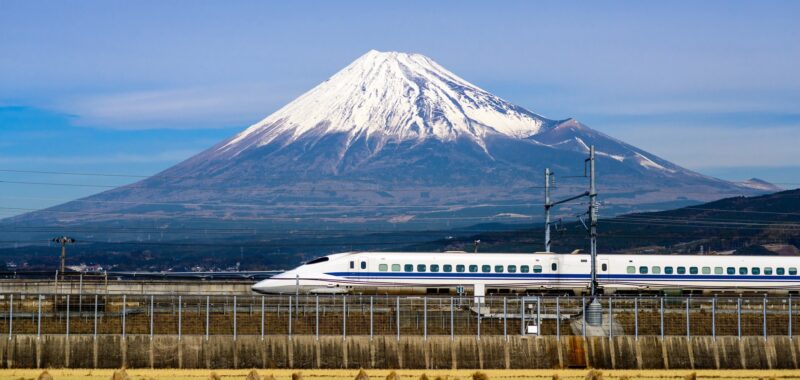
One of Japan’s largest railway companies wants fully self-driving bullet trains speeding through the country by the mid-2030’s. According to East Japan Railway (JR East), at least one prototype will debut in 2028. The company revealed its plans on September 10, citing hopes to both streamline its operations and make them more sustainable.
Japan’s iconic Shinkansen railines, more commonly known as bullet trains, have been a staple of the nation’s high-speed public transportation routes for over half a century. Traveling as fast as 300 km per hour (roughly 186 mph), the trains weave throughout the country’s major urban areas, and are now completely electric as well as more lightweight than earlier models. According to The Japan Times, self-driving bullet trains have been a part of JR East’s overall plans since at least 2018, when the company presented its “Transformation 2027” project framework.
[Related: Texas could get a 205-mph bullet train zipping between Houston and Dallas.]
The plan for a phased rollout will begin in 2028 with Shinkansen trains upgraded with second degree automation capabilities. “Second degree,” in this case, means the railcar will operate without a human actively directing its routes, although a driver will remain inside the cockpit in case of any emergencies. These second degree trains will travel within a short section of the route connecting Nagaoka Station and the Niigata station center. JR East will then begin testing third degree automation lines—fully driverless with crew performing other duties as needed elsewhere on the trains—on an out-of-service route the following year.
From there, the company hopes to complete a fourth grade automation rollout between Tokyo and Niigata on the Joetsu Shinkansen line by the mid-2030s, with other lines to come. In these situations, a bullet train would not require any human conductors or operators on board while in use. As the AFP notes, Joetsu line Shinkansen trains currently have a maximum speed of 275 km per hour (170 mph).
Autonomous vehicles are most commonly associated with self-driving cars in the US, where critics continue to voice concerns over their viability and safety. Theoretically, automated trains operating on predesignated schedules would entail simpler systems that face far fewer variables as what regularly occurs on public roads and highways.
Speaking with the AFP on Tuesday, a JR East spokesperson said the company’s decision mainly rests on “the need to constantly innovate railway technology.” At the same time, they also conceded that the advances “could, in turn, help address labor shortage and other issues.” Japan is home to the world’s oldest average population, with 1-in-10 people currently over the age of 80. The country has also simultaneously faced declining birth rates for years—combined demographic shifts that are already creating labor issues. Many companies are increasingly pursuing automation efforts as a workaround to the problems, with some efforts dating as far back as 2009. At the same time, critics contend that more human-centric solutions such as immigration reform and a more tolerant stance towards newcomers may also help address the problems.

